Most people don’t think about strengthening their back much. After all, it’s not like you can see it in the mirror.
But, just like many other commonly-weak areas of the body, your back gets weaker when you spend a lot of time sitting — especially the upper portion. “In addition to sitting, many people are more focused on the front,” says Rob DelaCruz, co-founder of Structure Training Systems. “It’s what you see in the mirror, and most everyday tasks are done in the front.” Shortening and tightening of the muscles in the front can cause weakness and imbalances in the back, he explains.
“The most common area that needs to be addressed is the mid-back,” notes Jay Arzadon, founder and head coach at Arzadon Fitness. “Most of us actually have powerful upper traps, either due to stress and tension or sitting in front of a computer screen all day. However, weakness in the mid-back muscles (such as your rhomboids, lower traps and teres major/minor) is usually the underlying culprit that is creating poor posture and shoulder weakness.”
Here experts explain how to strengthen these oft-neglected back muscles, release tension to work them more effectively, and work the supporting muscles so they can work together for overall strength.
6 BACK-STRENGTHENING MOVES
TRX ROW
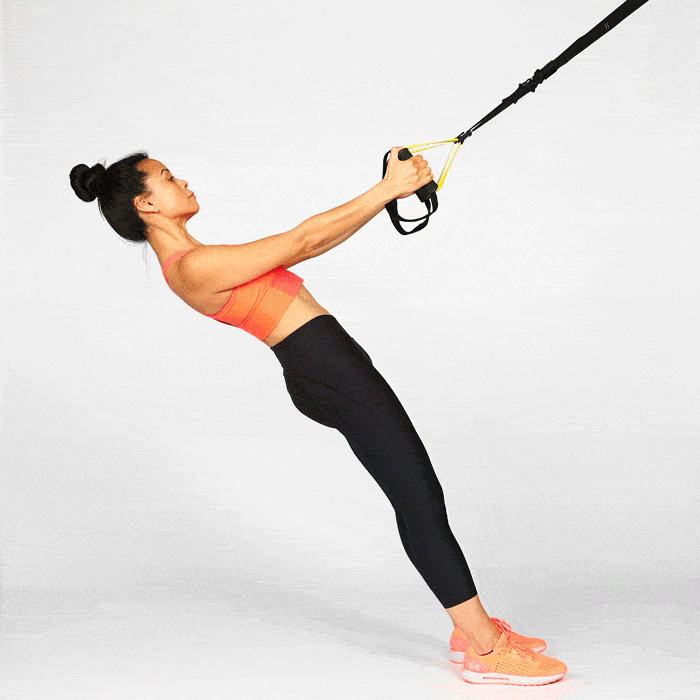
“It can be easily modified for all levels and extremely effective,” DelaCruz says. “Suspension trainers also allow you to use multiple muscles and are effective for stabilization.”
The move: Stand facing the anchor point of the suspension trainer. Hold the handles at your rib cage, elbows bent to 90 degrees. Squeeze your glutes to maintain a plank position as you straighten your arms and then row yourself back to the starting position. As you complete the movement, keep your shoulders back and down, squeeze your shoulder blades together, and keep your elbows tight by your sides. To make the exercise harder, walk your feet toward the anchor point. To make it easier, walk further away. Complete 3 sets of 8–12 reps.
THORACIC ROTATION FOAM ROLLING
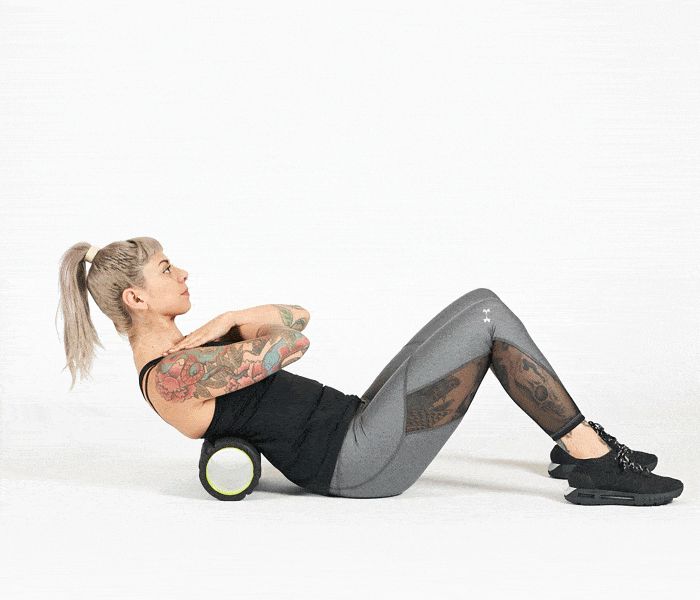
This works on mobilizing your thoracic vertebrae joints and massages the paraspinal muscles there, says Theresa Marko, DPT. “It’s such a good exercise to help combat all of the leaning forward that happens while sitting at our computer because it pushes us into extension instead of flexion, which happens with sitting.”
The move: Lying on top of the foam roller, place it perpendicular to your spine. Place your hands behind your head for gentle support as you slowly roll up and down on the upper portion of your back. “Keep your spine a little bit flexed, like when doing an abdominal crunch,” Marko advises. “This will help the joints mobilize better and you may hear some pops. That is perfectly OK!”
DUMBBELL DEADLIFT
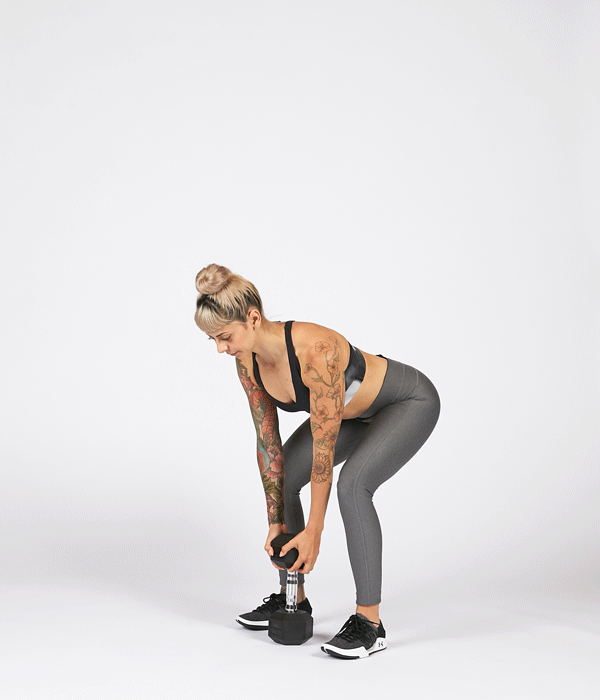
“My absolute favorite exercise to teach someone with back pain is the deadlift,” says Isaac Vaisberg, a certified personal trainer. “Dumbbell, kettlebell or barbell, the effect is the same: It teaches proper bracing of the core, neutral spine posture, and develops what we call the posterior chain, which is all of the muscles responsible for keeping us upright.”
The move: Stand over a vertically placed dumbbell with your feet slightly wider than shoulder-width. With a soft bend in your knees and your chin tucked, send your butt back, like you’re closing a drawer with your butt. Pick up the dumbbell, then return to the starting position, squeezing your glutes at the top. Repeat for 3 sets of 10 reps.
SEATED CABLE ROW
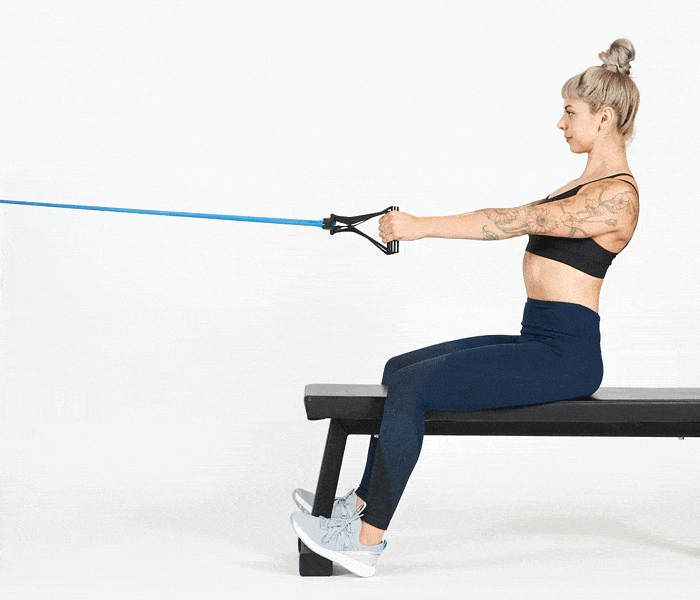
Arzadon loves this exercise because it’s endlessly adaptable depending on your hand position. “Varying the grip with which you perform the exercise helps target different muscles,” he explains. “I always prefer to have clients start this exercise in a neutral grip position, because it’s the most accessible position to target your back muscles.”
The move: Place your feet on the foot rest and grab the cable handles with both hands, palms facing each other. Let your shoulders roll forward slightly, then pull your shoulders back and down, like you’re pinching a piece of paper between your shoulder blades. From here, pull your elbows into your waist, pause for two counts to better activate the upper back muscles, then reverse the motion and return to the starting position. Complete 3 sets of 8–12 reps.
DEADBUGS

“What I love most about deadbugs in helping people relive their back pain is that it corrects both anterior and posterior pelvic tilts,” Vaisberg says. ”Various muscle imbalances can result in improper posture where the pelvis is tilted either forward or backward. Either case causes different issues, but correcting them comes down to the same thing: learning proper core control.”
The move: Lie on your back with your knees bent and your feet flat on the floor. Find a neutral spine position, not too arched, but also not pressed flat into the floor. Bring knees up into a tabletop position, and extend your arms up toward the ceiling. Inhale and expand your rib cage in all directions. As you exhale, lower one arm and the opposite leg toward the floor, keeping your core braced and your spine neutral. Repeat on the other side. Repeat for a total of 8 repetitions per side.
Vaisberg’s number 1 tip for deadbugs: “Go slow! The slower you move, the better the quality of the movement. We are looking for control with deadbugs, not speed.”
CHEST SUPPORTED ROW
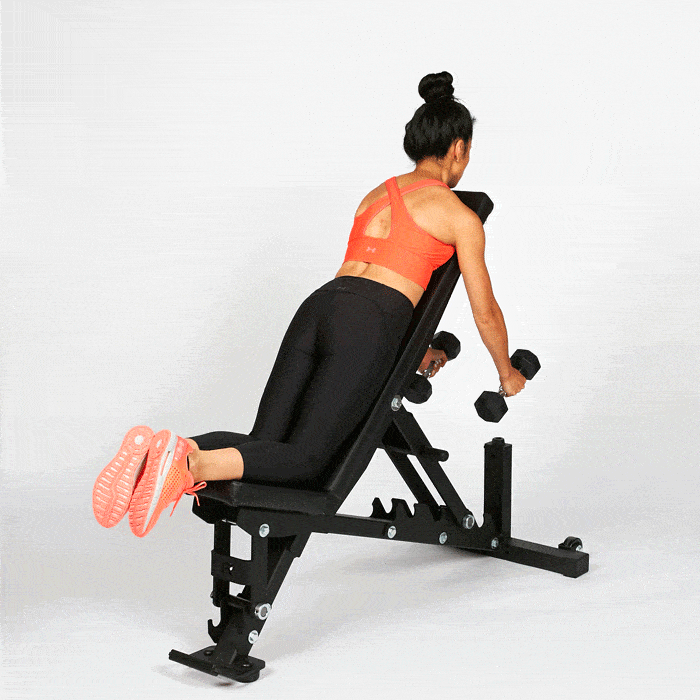
“This is a great way to isolate your upper back muscles without using any momentum from your lower back,” Arzadon says.
The move: Using an incline bench, set yourself up belly-down, holding the dumbbells in your hands, so the top edge of the bench aligns with your mid-chest. Let the bench support your body weight. Pull your shoulder blades back and down, then pull the dumbbells back toward your hip bones, squeezing your shoulder blades together and keeping your neck neutral. Pause for 1–2 counts here, then return back to the starting position. Complete 3 rounds of 8–10 reps.
Check out “Workout Routines” in the MyFitnessPal app to discover and log workouts or build your own with exercises that fit your goals.




